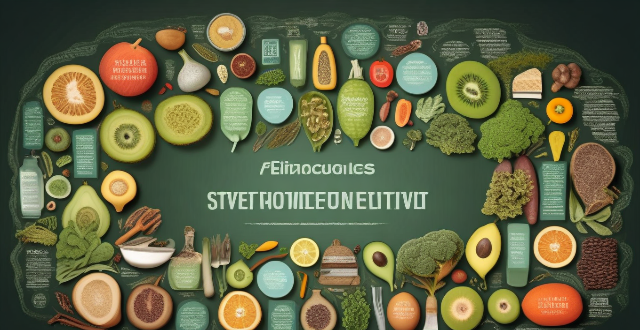This article discusses the interconnectedness of climate change, food security, and biodiversity, emphasizing their impacts on each other and the need for collective action to address these issues. It defines each topic and outlines how they affect one another, highlighting the importance of sustainable practices in agriculture, conservation efforts, and reductions in greenhouse gas emissions as essential components of a comprehensive strategy to protect our planet's future.

The Interconnectedness of Climate Change, Food Security, and Biodiversity
Introduction
Climate change, food security, and biodiversity are intertwined issues that have significant impacts on our planet. This article will explore the link between these three critical topics, highlighting their interdependence and the need for collective action to address them.
Climate Change
Definition
Climate change refers to long-term changes in temperature, precipitation, and other weather patterns caused by human activities such as burning fossil fuels and deforestation.
Impact on Food Security
- Droughts and Floods: Extreme weather events like droughts and floods can destroy crops, leading to food shortages and price increases.
- Pests and Diseases: Warmer temperatures can increase the spread of pests and diseases that affect crop yields.
- Loss of Arable Land: Rising sea levels and desertification can reduce the amount of land available for agriculture.
Impact on Biodiversity
- Habitat Loss: Climate change can cause habitat loss due to rising temperatures and changing rainfall patterns.
- Species Extinction: Some species may not be able to adapt to rapidly changing conditions, leading to extinction.
Food Security
Definition
Food security exists when all people, at all times, have physical and economic access to sufficient, safe, and nutritious food to meet their dietary needs and food preferences for an active and healthy life.
Impact on Climate Change
- Agriculture Practices: Industrial agriculture contributes significantly to greenhouse gas emissions through processes like livestock rearing and fertilizer use.
- Deforestation: Clearing land for agriculture is a major driver of deforestation, which contributes to climate change.
Impact on Biodiversity
- Monocultures: Large-scale monoculture farming can lead to a loss of biodiversity as it replaces diverse ecosystems with single-species crops.
- Pesticide Use: Pesticides used in agriculture can harm non-target species, reducing biodiversity.
Biodiversity
Definition
Biodiversity refers to the variety of life found on Earth, including the variety of plants, animals, and microorganisms, as well as the genetic diversity within these species.
Impact on Climate Change
- Carbon Sequestration: Forests and other ecosystems play a crucial role in sequestering carbon dioxide from the atmosphere.
- Ecosystem Services: Healthy ecosystems provide services like pollination, water purification, and nutrient cycling that help mitigate climate change.
Impact on Food Security
- Crop Pollination: Many crops rely on pollinators like bees, whose populations are threatened by habitat loss and pesticide use.
- Nutrient Cycling: Healthy soil biodiversity is essential for nutrient cycling, which supports plant growth and therefore food production.
Conclusion
The interconnectedness of climate change, food security, and biodiversity highlights the urgent need for integrated approaches to address these challenges. Sustainable practices in agriculture, conservation efforts, and reductions in greenhouse gas emissions are all essential components of a comprehensive strategy to protect our planet's future. By working together, we can ensure a world where everyone has access to safe and nutritious food while preserving the rich tapestry of life on Earth.